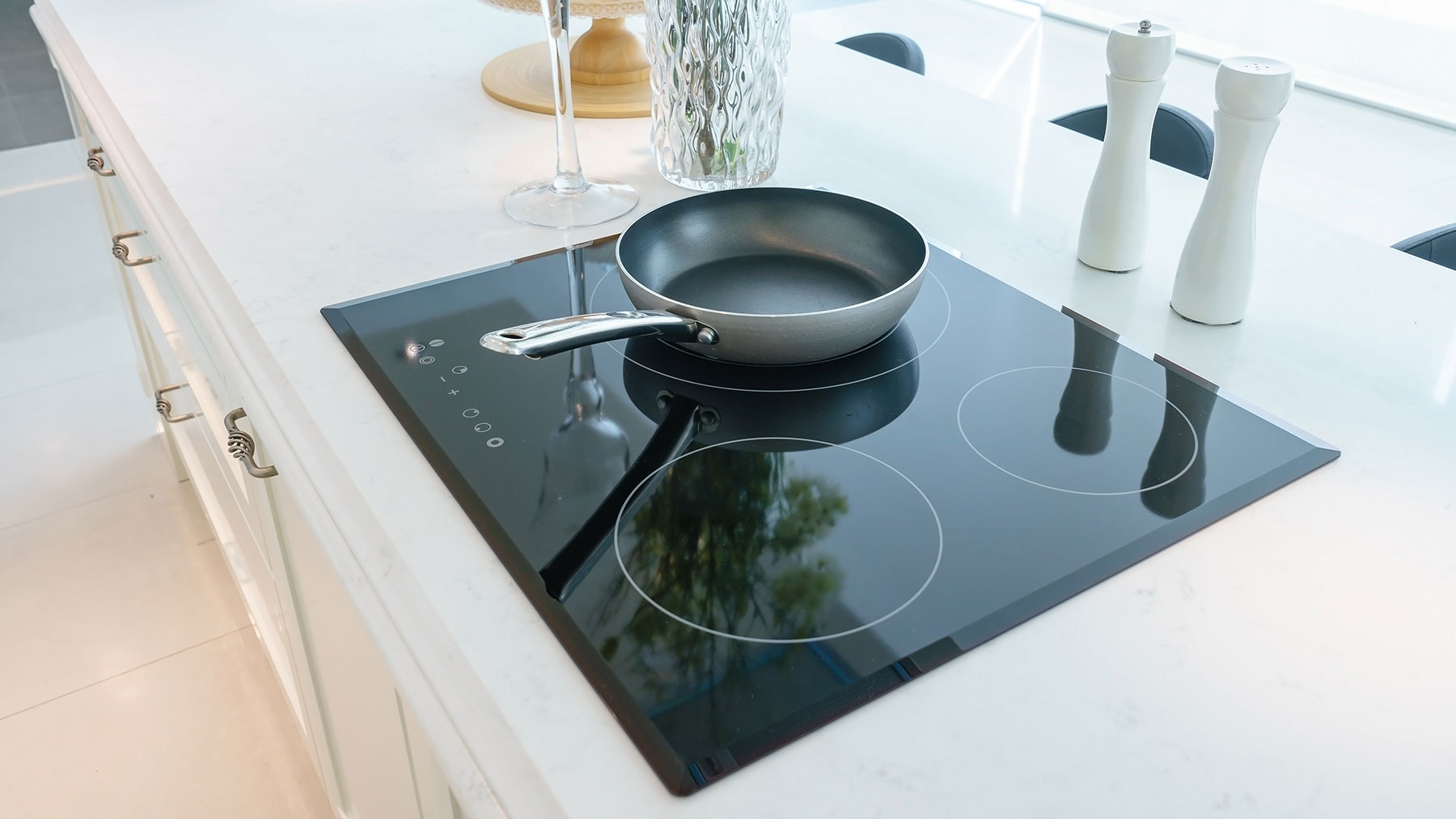OnePlus 13 vs iPhone 16 Pro Max: which flagship wins?
Android vs iPhone has a new contender
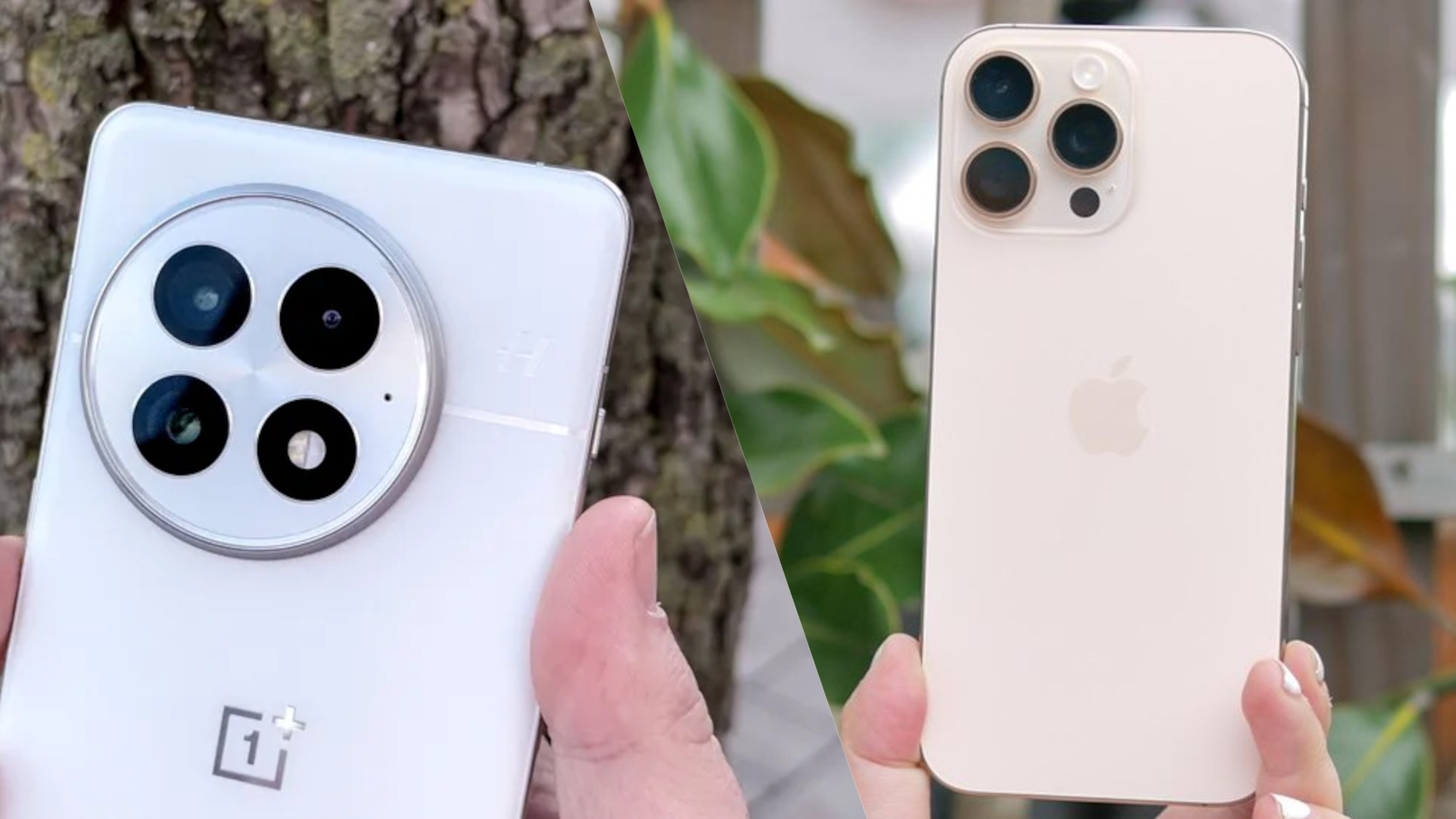
In the past, the battle between smartphones was locked to Samsung vs Apple, but nowadays there are more competitors than ever. One such phone maker is OnePlus, which just released its latest smartphone globally: the OnePlus 13.
The company has undoubtedly taken the smartphone world by storm, with it somehow managing to stand as one of the titans of the Android ecosystem. Not only that, the OnePlus Open managed to unseat Samsung as the best foldable phone in our list.
However, the real question is how the next generation OnePlus will compare to the true competition for any Android device. I am, of course, talking about the iPhone 16 Pro Max. To answer that, let's take a look at everything we know and tested about both devices to find out precisely what each can offer you.
OnePlus 13 vs iPhone 16 Pro Max: Specifications
| Row 0 - Cell 0 | OnePlus 13 | iPhone 16 Pro Max |
| Display size | 6.82 inches | 6.9 inches |
| Refresh rate | 120Hz | 120Hz |
| Chipset | Snapdragon 8 Elite | A18 Pro |
| Memory | 12GB, 16GB, 24GB | 8GB |
| Storage | 256GB, 512GB, 1TB | 256GB, 512GB, 1TB |
| Rear cameras | 50MP main (f/1.6), 50MP ultrawide (f/2.05), 50MP telephoto (3x, f/2.65) | 48MP main (f/1.78), 48MP ultrawide (f/2.2), 12MP telephoto (5x, f/2.8) |
| Front Camera | 32MP | 12MP |
| Battery size | 6,000 mAh | 4,685 mAh |
| Colors | Black, Blue, White. | Black, White, Desert and Natural Titanium |
OnePlus 13 vs iPhone 16 Pro Max: Price and availability
One of the biggest advantages the OnePlus 13 has over Apple is that it is much, much cheaper. For reference, the iPhone 16 Pro Max cost $1,199 at release, which is a premium over the iPhone 16 Pro’s $999 cost. Meanwhile, the OnePlus 13 comes at two different price options, $899 for the standard 12GB RAM/256GB storage version, and $999/£999 for 16GB/512GB.
Getting two prices is a bit of a pain, but the OnePlus 13 still remains one of the cheapest Snapdragon 8 Elite devices on the market. Not to mention being cheaper than other high-end Android devices like the Galaxy S24 Ultra (and likely the Galaxy S25 Ultra too) which costs $1,299, and the Pixel 9 Pro XL which costs $1,099.
OnePlus 13 vs iPhone 16 Pro Max: Design
For the most part, the One Plus 13 is pretty similar to the prior OnePlus 12, and that is by no means a bad thing. However, there are a couple of interesting alterations that impact how you use the device. Meanwhile, the iPhone 16 Pro Max resembles other iPhones in a basic look and style, but with the addition of the new camera control button.
Both phones come with flatter sides than older models, and much thinner bezels. However, the OnePlus 13 still makes use of a quad-curved display, which aims to make it feel a bit better when sitting in the hand. I can say that the OnePlus 13 is more comfortable to hold, but that’s partially because the iPhone is just a little too big.
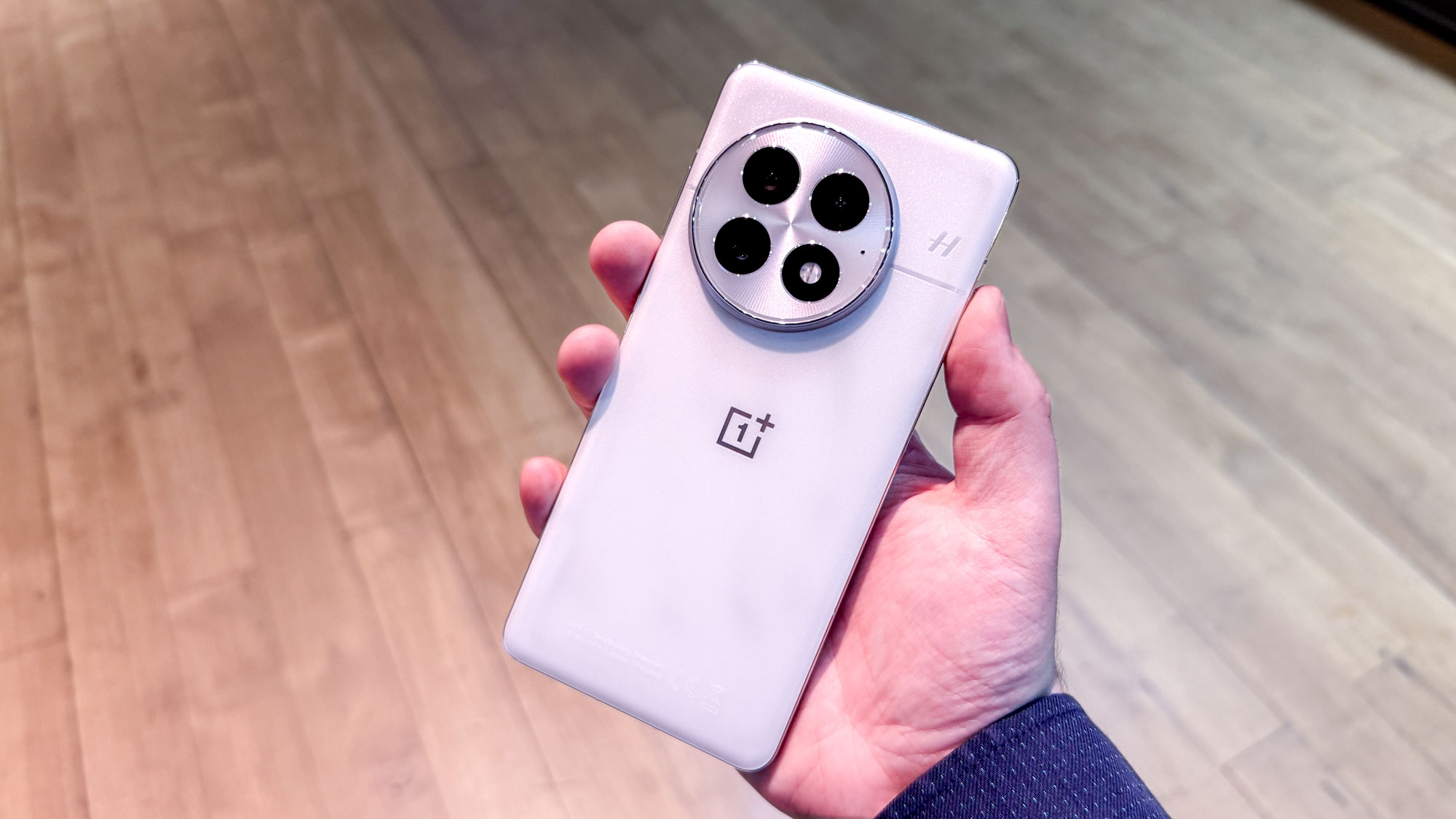
However, the biggest difference between both devices is the OnePlus signature camera block. Unlike other modern phones, OnePlus has its cameras situated on a large circular disc on the back of the phone. It’s striking, and OnePlus recently improved the design by making the cameras appear more streamlined. However, it can be a bit disconcerting when resting in your pocket.
Other than that, the OnePlus display is covered in a ceramic guard while Apple continues to make use of variations of its ceramic shield. It’s hard to compare the two without putting the phones through a stressful breakdown, but for the most part, both will comfortably survive most experiences.
When it comes to design I would have to give it to OnePlus, if only because it manages to differentiate itself from other phones. However, the iPhone remains one of the standouts of form and function combined, with the only real weakness being the increased size.
OnePlus 13 vs iPhone 16 Pro Max: Display
While the look of the phone is important, the area you’ll be looking at the most is the display. Both phones offer 120Hz refresh rates, but that’s where the similarities come to an end. Unfortunately for Apple fans, the iPhone offers slightly less resolution at 2868 x 1320 compared to the OnePlus 13’s 3186x1440.
However, when we tested both phones we found that the iPhone offers, on average, a brighter screen than the OnePlus 13. It reaches a peak brightness of 1,553 nits, versus the 1,104 nits of the OnePlus 13. However the OnePlus scored much better on color breadth and accuracy.
| Row 0 - Cell 0 | OnePlus 13 | iPhone 16 Pro Max |
| Peak brightness (nits) | 1,104 | 1,553 |
| DCI-P3 color gamut volume (%) | 86.2 | 80.9 |
| Delta-E color accuracy (lower is better) | 0.23 | 0.26 |
However, it should be noted that the OnePlus 13 is making use of its new “RadientView” system. This system adjusts the display’s color, contrast and brightness of specific screen areas to help increase visibility. This means that, while the numbers might lag behind a bit, the OnePlus 13 is just as easy to read in bright conditions.
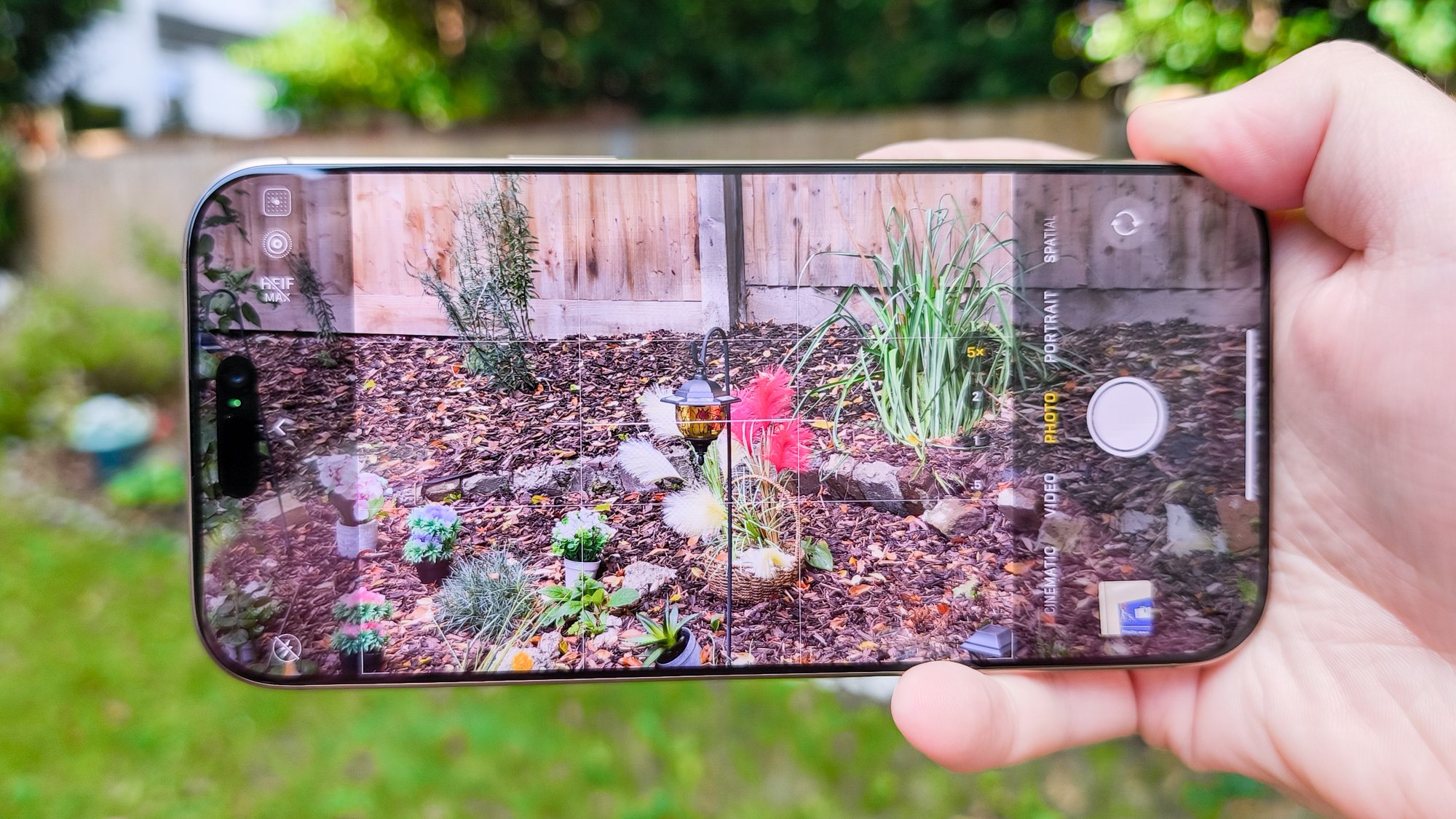
OnePlus 13 vs iPhone 16 Pro Max: Cameras
Cameras on smartphones are tricky to compare for several reasons, the main being that certain aspects can vary wildly. For instance, on paper, the OnePlus 13 should be miles ahead thanks to its three 50MP cameras, including an ultrawide and a telephoto with 3x optical zoom. Meanwhile, the iPhone 16 has a 48MP main camera, a 48Mp ultrawide and a 12MP telephoto with 5x zoom.
When it comes to the selfie cameras both phones leave a bit to be desired. The iPhone is the clear loser on paper with a 12MP camera. Meanwhile, the OnePlus has a much more detailed 32MP selfie camera. However, as with all the other cameras, the introduction of AI helps to mitigate some of the weaknesses and puts everyone on a relatively stable playing field.
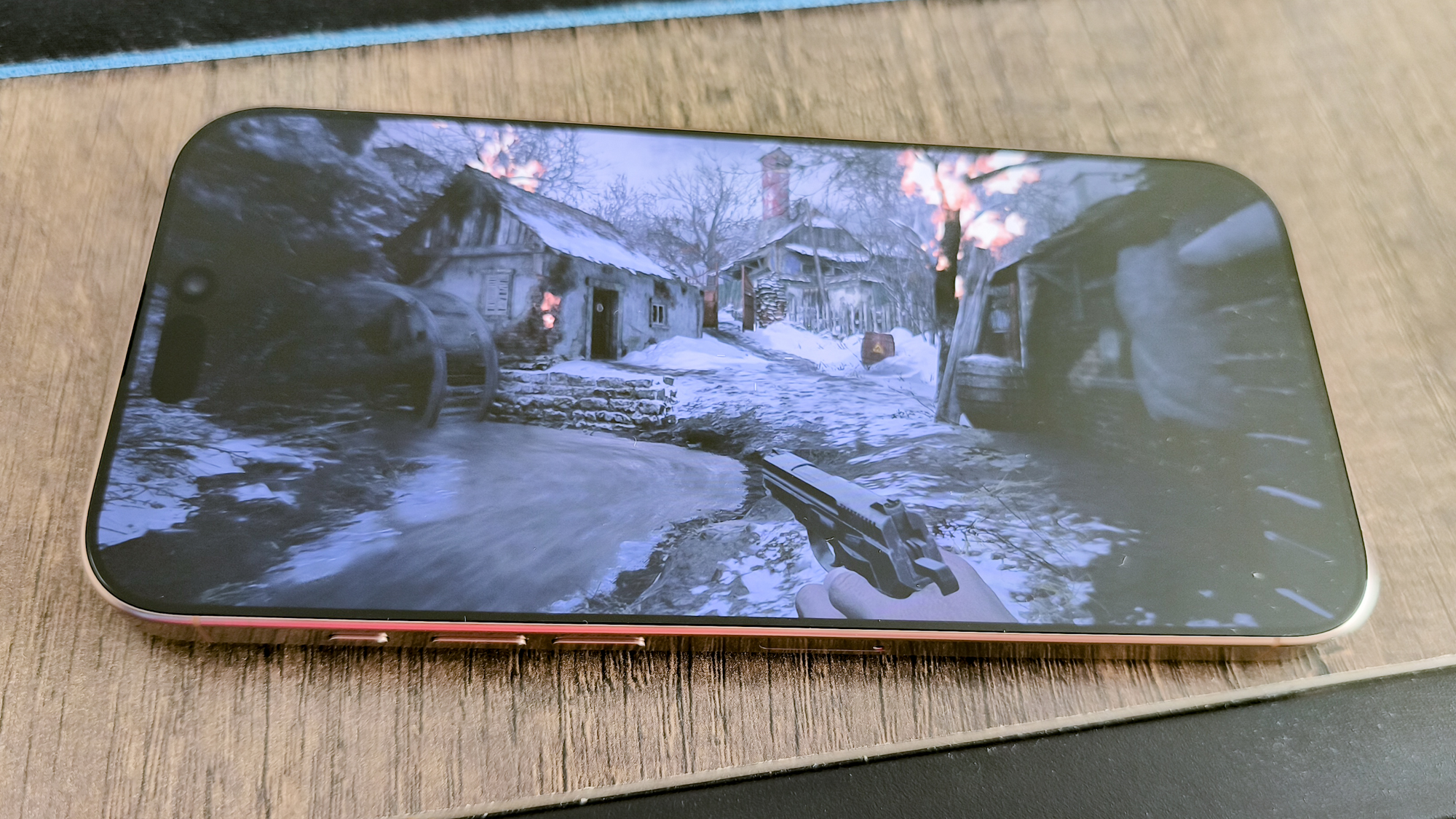
The numbers only tell half the story and the competition is a little closer than many might imagine. For instance, while the main camera of the OnePlus 13 offers a brighter, sharper image than the iPhone, the darker tone of the iPhone lends itself to more contrast when looking at shadows. For the most part, both phones will do what you need when it comes to taking the odd image or video, but the OnePlus 13 pushes ahead from the older iPhone.












In our detailed 200 photos with the OnePlus 13 vs. iPhone 16 Pro Max photo shootout, it's a narrow win for the iPhone 16 Pro Max, which is surprising given how it cruised to victory over the OnePlus 12. In the photo gallery above, it's the performance of the iPhone 16 Pro Max that drives our decision to choose it over the OnePlus 13. But to OnePlus' credit, it's a big upgrade over its predecessor in areas like dynamic range, macro, and low light photography. That's why it remains a best camera phone contender.
OnePlus 13 vs iPhone 16 Pro Max: Performance
Apple is known for getting the most out of its chips, even with relatively smaller amounts of RAM compared to other devices. The iPhone 16 Pro Max is no different and it really pushes what the A18 Pro chip can do. In our testing, the iPhone manages to score nearly 50% higher than the Galaxy S24 Ultra in the single-core Geekbench results. However, multi-core scores had much less of a gap, with the iPhone only just coming ahead.
Despite this, the OnePlus 13 is making use of the most powerful Qualcomm chip currently available, the Snapdragon 8 Elite. So, in theory, it should vastly outperform the older iPhone right? Well, not exactly.
| Row 0 - Cell 0 | OnePlus 13 | iPhone 16 Pro Max |
| Chipset | Snapdragon 8 Elite | A18 Pro |
| Geekbench 6 score (single-core / multi-core) | 2,893 / 9,058 | 3,386 / 8,306 |
| 3DMark Wild Life Extreme (score / fps) | 5,727 / 34.29 | 3,822 / 22.90 |
| Adobe Premiere Rush time to transcode (mins:secs) | 1:01 | 0:54 |
In our testing, we found that, while the OnePlus 13 dominated in the Geekbench multi-core score, it still lagged behind the single-core score. This means that when using the phone, you'll see a marked difference when using programs that require more of the phone's cores. The best representation of this is in the 3DMark tests, which show both a higher score and more frames per second when rendering graphics.
Part of this will be the power of the Snapdragon 8 Elite, but it will also come down to the varying RAM options. Unfortunately, while Apple has finally increased the RAM on the phone, it's still minor compared to options on other devices. As such, it's possible the iPhone isn't pulling as much power from the chip as it could.
However, it isn’t all a win for OnePlus as Apple’s phone is still faster at transcoding a video on Adobe Rush Premiere. This isn’t much of a surprise though, as Apple is known for having some of the best editing hardware on the market. So, if you're looking for a gaming phone, then the OnePlus is the better option.
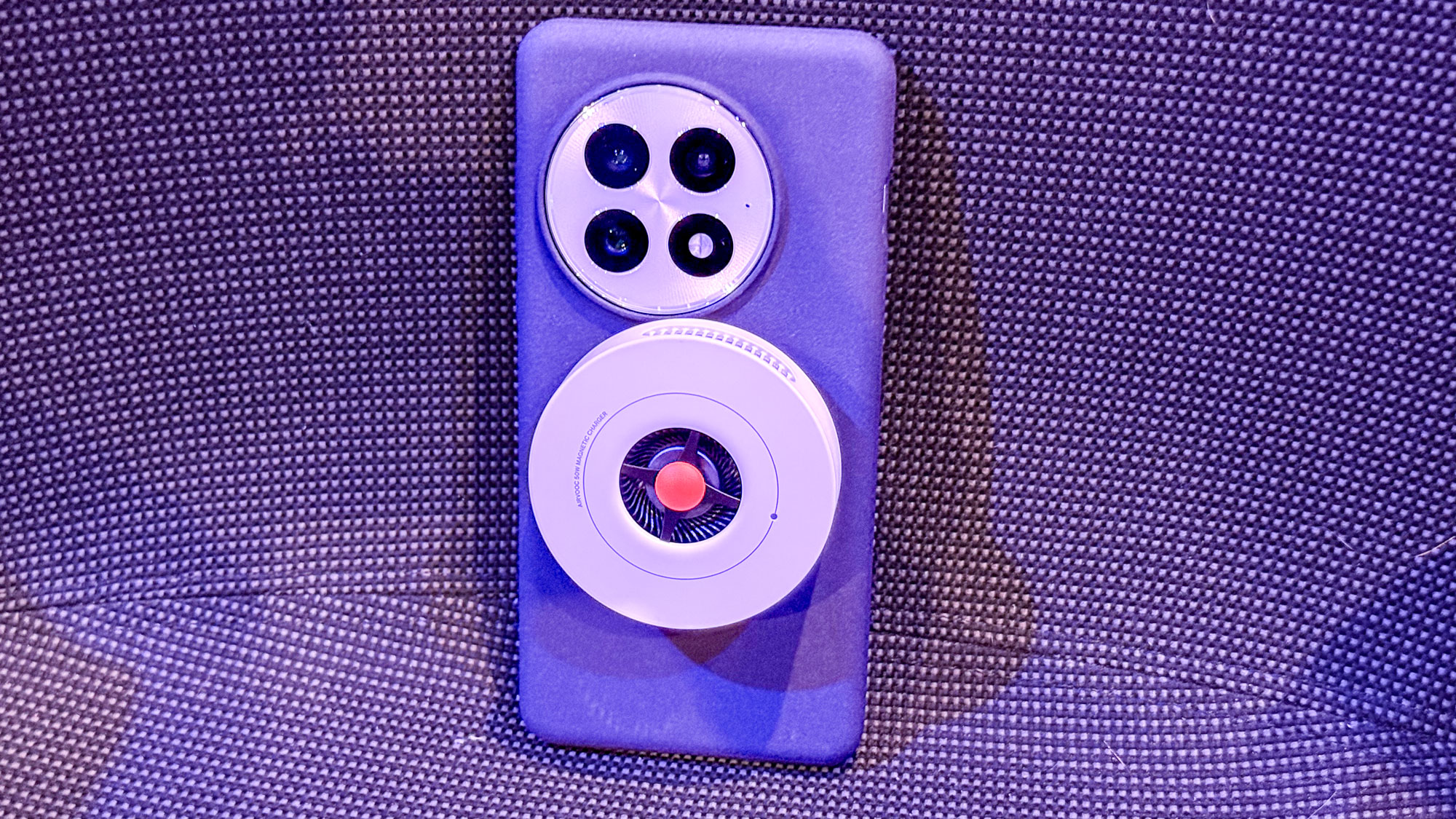
OnePlus 13 vs iPhone 16 Pro Max: Battery Life
There’s little doubt that the OnePlus 13 offers a much larger battery, with the phone coming with a massive 6,000 mAh battery. It manages to last for 19 hours and 45 minutes in our benchmark testing. Meanwhile, the iPhone 16 Pro Max comes with a 4,685 mAh battery and lasts 17 hours and 38 minutes. While this is impressive, and the longest-lasting iPhone released thus far, it’s still a pretty major difference.
OnePlus also improves its fast charging, with the 13 supporting 100W charging that allows the phone to reach 56% in just 15 minutes. The iPhone, meanwhile, could only get to 29% after 15 minutes, and 55% in 30 minutes. Unfortunately, this has been an issue with iPhones for a while, and even a 45W charger makes no real difference.
OnePlus 13 vs iPhone 16 Pro Max: Software and Special Features
The OnePlus 13 has been released with its own Android 15-based OxygenOS 15 operating system. This means that you get all of the same software features you would expect from an Android phone, including the OnePlus AI suite, Circle to Search and the Gemini Assistant. Meanwhile, the iPhone 16 Pro Max offers the peak of the recently released iOS 18.2, including Apple Intelligence.
For the most part, the difference between the two is more down to preference as they each perform their tasks admirably. We have a full breakdown of the difference in our iPhone vs Android article, but it mostly revolves around usability. You see, the Android OS is much more open, making it easier for developers to innovate and release new features. Apple, on the other hand, is more secure but it takes longer for new features to come out.
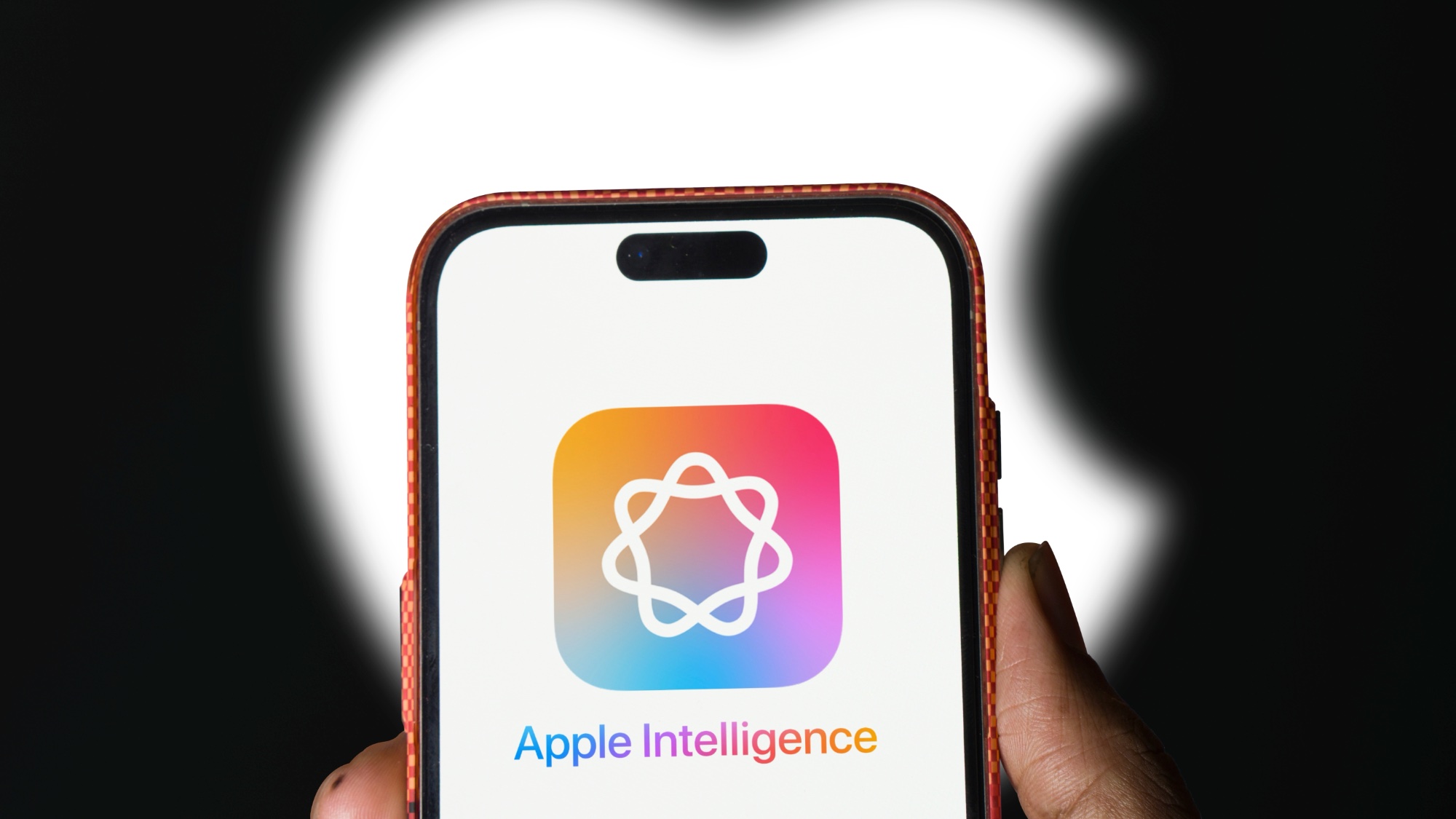
Apple Intelligence is a great example of this, with the AI promising the world but the actual features coming out piecemeal. However, those that have been released are pretty impressive, with the best being the Visual Intelligence feature. However, many people have been pretty underwhelmed by the features that have been released so far, but the only way to really go is up.
Interestingly, there is a bit of a connection between the iPhone and the OnePlus in the form of the “Share with iPhone” option. This allows users to easily share files between devices and certainly seems more secure than the long-awaited RCS communication between Android and iPhone. The OnePlus 13 also includes BeaconLink, a walkie-talkie mode that allows you to make calls via Bluetooth in a 200m range. It’s an interesting idea, but you would never buy a phone just because of it.
OnePlus 13 vs iPhone 16 Pro Max: Verdict
The OnePlus 13 is a fantastic device and offers what could be described as the ideal Android experience. It combines everything we love about Android, from the design to the software, in an affordable package. However, Apple is no slouch and while it might falter at certain points, you know what you’re getting when you buy the device.
In this OnePlus 13 vs. iPhone 16 Pro Max debate, Apple's flagship model still proves it's the one to beat. Even though you'll have to pay much more for it, you get a phone that takes better photos, a more robust set of AI features, and longer software support.
As it currently stands you would be hard-pressed to find a better deal than the OnePlus 13, but it's worth being aware of what is coming soon. We are expecting the Galaxy S25 series to be unveiled at Galaxy Unpacked later this month, as well as the iPhone 17 series and the iPhone SE 4 at some point this year. It will be interesting to see how the OnePlus 13 compares to those devices, but it has certainly set the benchmark for the next generation of phones.
More from Tom's Guide
Sign up to get the BEST of Tom's Guide direct to your inbox.
Get instant access to breaking news, the hottest reviews, great deals and helpful tips.

Josh is a staff writer for Tom's Guide and is based in the UK. He has worked for several publications but now works primarily on mobile phones. Outside of phones, he has a passion for video games, novels, and Warhammer.
